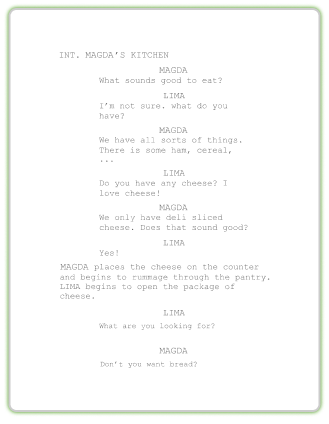With one click
Export a perfectly formatted traditional script.
I love a great twist! Unfortunately, the twists are so often predictable. I can almost call them from act one, and it drives my co-watchers crazy. So, if you want to write a climactic twist in your screenplay, some tried and true techniques will keep your audience guessing until the end. And, maybe you’ll even keep me guessing, too!
Export a perfectly formatted traditional script.


Bryan Young is a filmmaker, a screenwriter, and a journalist for some top-notch websites, including StarWars.com, HowStuffWorks.com, Syfy.com, and /Film, and he’s analyzed some of the world’s favorite movies to determine what makes them work. We wanted to know: what makes a great twist in a script, and how do we write one?
“If you’re looking to create great climactic twists, one of the phrases that you’re going to hear a lot is that you need to make it surprising, but inevitable,” Young began. “You need to build all of the red herrings away from that twist, or aimed toward that twist, or clues toward that twist so that the audience doesn’t feel betrayed by it.”
Read: inevitable but not predictable. You want to lead your audience to the twist ending, but keep all of your clues vague enough that they don’t figure it out too soon.
This is a phrase that refers to false information that’s meant to steer your reader in the wrong direction.
Your audience thinks they know what’s going to happen until they hit a dead end. You show them that their initial idea is not possibly how this story could progress. You can use this device multiple times.
You know the feeling when a magician has you captivated and reveals his or her trick with their right hand, but you realize later that you don’t know what the left hand was doing all that time? Plant clues where the audience might be paying attention to something else.
Foreshadowing not only gives clues, but it makes your audience feel less betrayed when you do finally reveal your twist. They’ll feel like they were in on the outcome all along, even if they didn’t recognize the signs at first. To use this device, subtly imply that something could happen and make it happen at some point in your script. Don’t use foreshadowing if you don’t plan to deliver on the hint later.
Ever heard of the “A Story” and the “B Story” in a screenplay? There’s the main plot that’s evident, and often a subplot that’s happening to make the story more dynamic. The subplot can take the audience’s attention away from the main plot, leaving room for a twist, or it could play a hand in the main plot’s outcome. The key here is to make sure you’re not overcomplicating the story.
Find characters that your protagonist can lean on and trust, and that the audience trusts at first, too. But, use foreshadowing to show that there may be something more to this character’s motives. Sometimes, you’ll see this technique used with a narrator who is telling the story, but we later find out he or she is hiding something or has an angle that we didn’t see coming.
It is hard to kill off characters, both for the writer and the audience, who has invested in them. But, killing off characters that your audience thought would play a significant role in the story is the ultimate twist, because it makes the audience feel like no one is safe and will keep them guessing “who’s next.” We saw this play out in nearly every episode of “Game of Thrones.” Of course, use this device carefully, because you also don’t want to kill people off just for shock value. That will only make your audience mad.
“When they go back, and they read the screenplay all over again, or they watch the movie over again, they’re going to see that you laid the clues properly,” Young told us. “It seemed so surprising and shocking that it couldn’t have possibly been leading there, but that when all of the clues add up, you understand immediately. It was built from the beginning. As you’re going for that climax, make sure you’re focusing on making it surprising, but inevitable.”
Lay the groundwork for your twist early and often, and you’ll be sure to take your audience on a journey that they won’t soon forget.
Bet you didn’t see that coming,